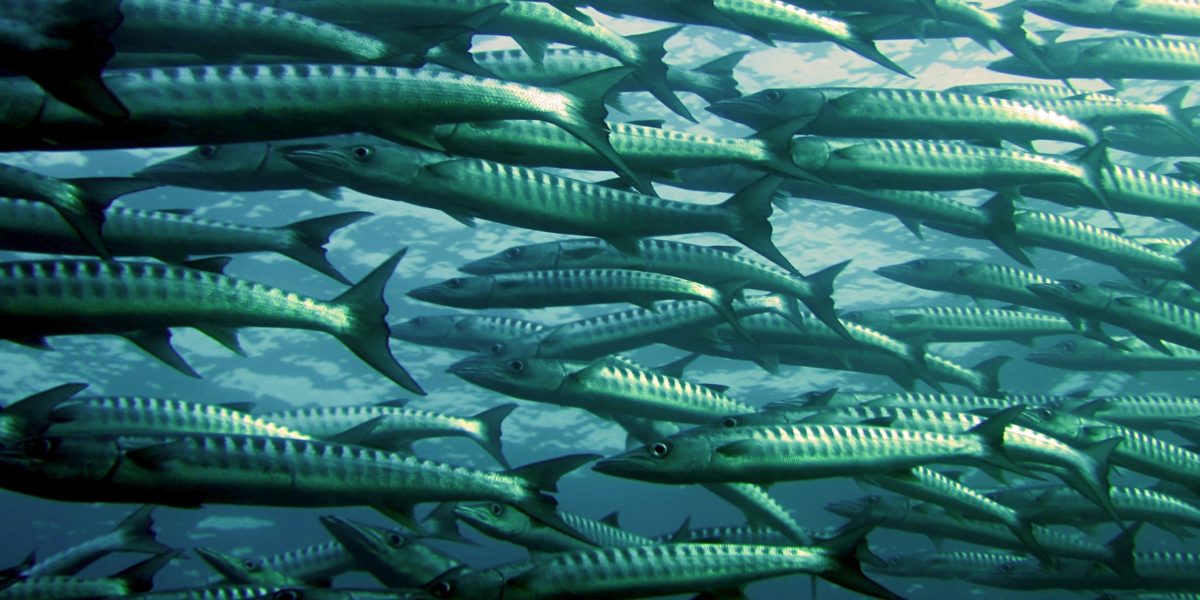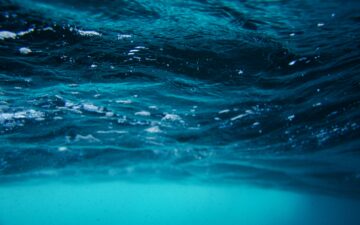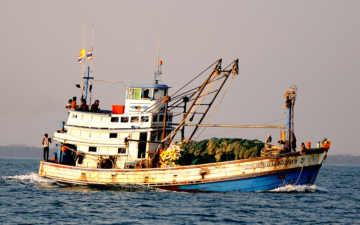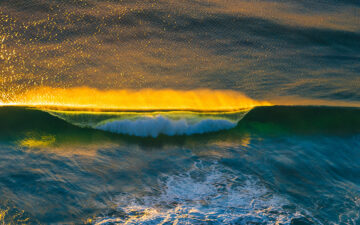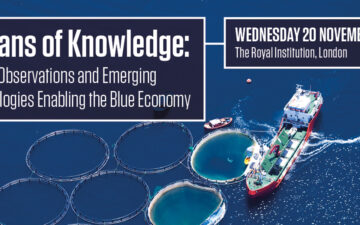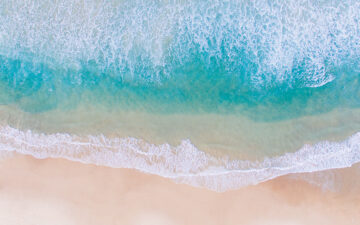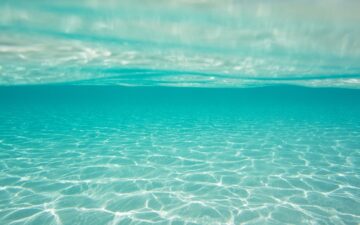Jessica Sarnowski is an established EHS thought leader who specializes in content marketing. Jessica crafts compelling stories intended to reach a broad audience of environmental professionals. She may be reached through LinkedIn at https://www.linkedin.com/in/jessicasarnowski/
It is a rainy Friday night in Northern Virginia. You are driving to the grocery store as the windshield wipers swish repetitively. You cannot be distracted by the rain, the cars, or the lightning strikes in the background. Because you have one thing on your mind: fish. Your partner’s parents are coming into town and you agreed to host them for a dinner party — and they are fish aficionados. You, on the other hand, have only been fishing once and, aside from Sushi, you hardly eat fish. And you rarely prepare it at home.
As you browse the grocery store aisles, you arrive at the fish counter. You are faced with a decision: wild caught or farmed fish. But what is the difference? “Wild” means caught in the wild, indicating that fish is caught in the ocean by either traditional/artisanal or large-scale commercial fishing methodologies. But what about farmed fish? Are the fish that come from such farms high quality and healthy enough to eat? You pause to ponder this question…
What is Aquaculture?
The official term for a fish farm is “aquaculture”. Aquaculture, performed responsibly, fills a major gap in the demand for fish eaten as a source of nutrients. Did you know that over half (50%) of the fish eaten worldwide derives from aquaculture? Amazingly, almost half (50%) of the fish imported to the U.S. is from fish farms. Which is a large amount considering that seventy to eighty five percent (70-85%) of seafood in the U.S. is imported. Although not all of the aquaculture products may be used for food (some may help with habitat restoration), food is a significant percentage of imports. One can argue that the fish on your dinner plate is just as likely to be from a farm as it is from the wild.
To state the obvious, the ocean is vast and fluid. It is the opposite of compartmentalized. If a fish farm is set up in one location, then the impact of this farm extends beyond that location and affects the entire ecosystem both vertically and horizontally. If contamination occurs due to aquaculture, then it is not necessarily contained. In addition, if too many wild fish are used to feed the farmed fish, then the balance of the ecosystem is shifted such that the entire system is in peril. For this reason, The Ocean Foundation advocates for closed-system technologies such as re-circulating tanks, raceways, and flow-through systems.
Read more information about sustainable aquaculture by visiting our research page:
The Four Types of Aquaculture
Generally speaking, there are four types of aquaculture at play currently. The first two are open systems.
1. Near Shore Open Pens
These pens are open to the elements and are located close to the shoreline. They are primarily used for fin fish such as Salmon. Because they are open pens, there is a risk of introducing non-native (exotic species) and fecal waste into the environment. There are also complications to consider, such as natural predators, communicable diseases, and the release of inputs such as antibiotics and excess feed into the environment. The effects of open pens spread beyond the immediate pen area. And thus, they are a much less sustainable option for the ocean.
2. Offshore Open Pen Systems
These pens are basically the same as the near shore pens, except that they are placed farther out into the ocean. They come with the same risks and a larger carbon footprint due to managing the far out location of the pens. They are slightly less harmful to the immediate environment thanks to water depth and currents sending the wastes and inputs across a greater area.
3. Land Based Closed Systems
The idea of taking fish out of the ocean and putting them in land-based tanks may seem, at first, undesirable. But it is in fact a much more sustainable option. In one type of closed system, the fish are placed in recirculating aquaculture systems (RAS). RAS can be small and cheap, or large and commercial depending upon the location and capital invested. Because RAS are self-contained, one doesn’t have to worry about cross-contamination with the larger ocean system and with disturbing an entire ecosystem subunit. In addition, these systems allow for polyculture: growing animals, bivalves, algae, and vegetables together.
If the systems raise omnivores and herbivores, and they focus on other aspects of sustainability such as the use of renewable sources of energy and water reclamation, these closed systems are a viable and sustainable alternative to meeting the demand for fish. Other types of closed systems include raceways, inland ponds, and flow-through systems.
4. Ancient Techniques
There are many ancient techniques to fish farming – such as the intertidal oyster farming by the Greeks in 100 BC and the Egyptian method of combining agriculture with Nile tilapia in the fields and ponds alongside the Nile. However, one should bear in mind limitations with both the scalability of these older techniques and the new challenges (ocean warming) that we face in this century due to climate change.
When looked at in total, number 3 is the most attractive option for building a sustainable model that can meet U.S. and worldwide demand for fish.
Why Does This Matter?
Back to the grocery store: As you stand in the fish aisle, you notice the lobsters nearby glaring at you in their tank. Perhaps you are the type to look away because you want to rescue every one of them and cannot bear the sight of them looking so sad. Perhaps you don’t even think about them. Regardless, the sustainability of aquaculture should matter to you. Because you, and your partner’s family, and others around the world depend on a steady source of fish protein as either a main dietary component or as a dietary supplement.
The concept of a “blue economy” is one that parallels the idea of “green” businesses. Businesses that prioritize sustainability, specifically being “ocean-positive,” are the ones that will thrive in the future, because it is undeniable that the ocean is changing and that people will continue to eat fish. Let’s break down why this blue economy concept matters to three different types of people:
Those Performing Aquaculture
Those in the business of commercial aquaculture should care about sustainability because the ocean needs to stay healthy in order to produce enough product. If the systems used to farm fish deplete the natural resources, then there is a diminishing return.
Those Investing in Aquaculture
Simply put – investors should care about the quality of the product that they are investing in. If a natural resource is affected by pollution, then the investment will cease to produce a high-quality product.
The Purchaser
You want the fish that you eat and serve to others to be healthy. The saying “you are what you eat” is very true when it comes to fish (have you ever eaten bad shellfish? I have and it wasn’t pretty). The fish that are produced in a sustainable fashion are done so with the entire ecosystem in mind. Even if you aren’t an ocean enthusiast, the idea of clean, healthy, and happy fish should appeal to you as a consumer.
The Ocean Foundation’s Actions To Support The Blue Economy
In September 2020, The Ocean Foundation, in collaboration with Credit Suisse (CS) and Rockefeller Asset Management (RAM), launched the Rockefeller Credit Suisse Ocean Engagement Fund (hereinafter, OEF). The OEF promotes investment in the Blue Economy by both institutional and private investors. The primary goal of the OEF is to steer participating companies away from ocean-harming practices by way of dialogue with management teams. The lens is broad and the investments diversified, covering pollution prevention, carbon emissions, and ocean conservation. For example, the OEF is tackling not only the promotion of sustainable aquaculture practices, but also the reduction of land-based sources of marine pollution and the mitigation of plastic pollution.
Specifically, The Ocean Foundation provides guidance to participating aquaculture companies on items such as:
- Modification of fish feed for sustainability purposes
- Net-zero energy usage
- Implementation of new technologies (such as the closed systems RAS’s mentioned above)
- Reduction of plastic pollution (such as more sustainable alternatives for packaging or for the large Styrofoam floats used for near shore floating facilities)
- Mitigation of ocean pollution from existing open pen systems
Companies that are held in this Fund were chosen by The Ocean Foundation and RAM because of their potential to excel and their willingness to improve their aquaculture practices with the blue economy in mind. At the time of this blog, there are six (6) directly aquaculture-related engagements in the Ocean Engagement Fund.
The demand for fish will continue to grow in the decades ahead of us. Simultaneously, the ocean habitat is increasingly at risk due to climate change, plastic pollution, and other threats. Aquaculture practices are adaptable. And it is reassuring to note that companies are invested in focusing on more sustainable methodologies of fish farming.
The Fish Decision
Returning to the grocery store one last time. You’ve spent approximately ten minutes standing in front of the fish counter debating which fish to buy. You’ve been reading this blog and getting slightly odd looks from those around you. But, you don’t care. You discovered there are two kinds of farmed fish available at this store (one from an open system and one from a closed system), along with wild caught fish. The choice is now yours. You confidently pick your fish. You smile because you know that your partner’s parents will be impressed. Perhaps you also smile because you made a choice that is sustainable. Either way, you are now equipped to know what you are purchasing and more importantly, why you are purchasing a particular fish. You’ve solved the “fish” dilemma of the day. Overall ocean health? You’ll leave that to the experts.
Donate to support our work with the Ocean Engagement Fund.
